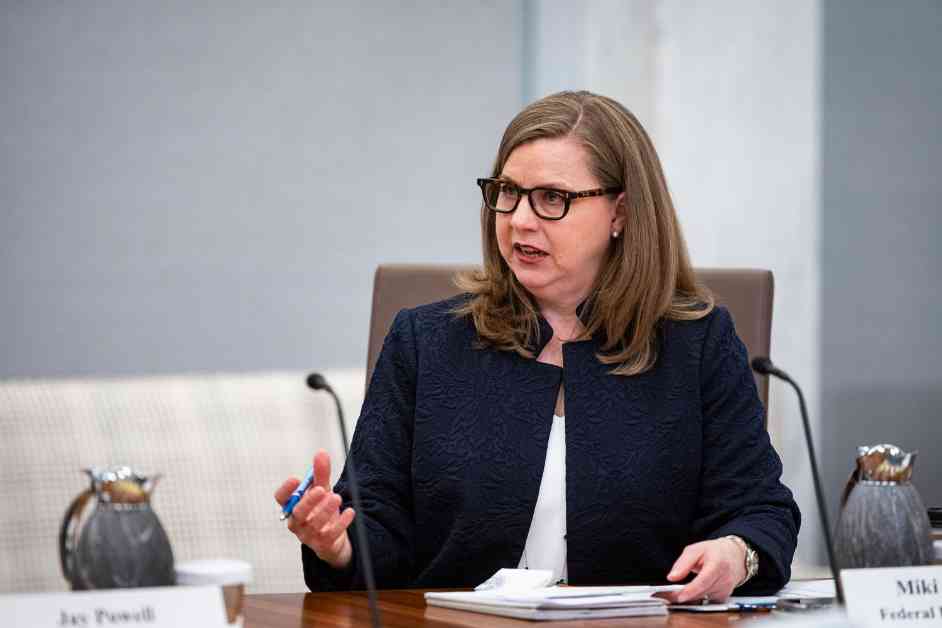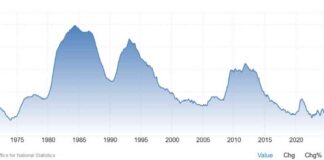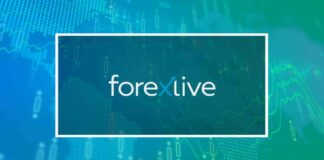Federal Reserve Officials Maintaining Interest Rates, No Cuts in Sight
As the financial world eagerly awaits Federal Reserve Chair Jerome Powell’s speech at the Jackson Hole Economic Symposium on Friday, his colleagues have been sharing their perspectives on interest rates and the current economic landscape. The possibility of interest rate cuts has been a hot topic of discussion, with many economists speculating that Powell may signal an impending rate cut during his speech.
Since late July, when Powell hinted at the possibility of a rate cut in September, market participants have been closely monitoring the Fed’s stance on interest rates. The central bank has kept its benchmark interest rate at historically high levels for over a year, aiming to control inflation by increasing borrowing costs for businesses and consumers. However, with inflation on the decline and signs of weakness in the labor market, some economists believe it may be time for a shift in interest rates.
Federal Reserve Governor Michelle Bowman expressed caution regarding the timing of a potential rate cut during a recent speech to Alaskan bankers. She highlighted the risks of inflation stemming from geopolitical tensions and fluctuations in housing demand, emphasizing the need for more data before committing to a rate cut at the upcoming Fed meeting in September.
Similarly, Chicago Fed President Austan Goolsbee echoed Bowman’s sentiments, stating that an interest rate cut in September is not a certainty. Goolsbee emphasized the importance of waiting for additional data before making any decisions on monetary policy. These cautious remarks from Bowman and Goolsbee suggest that not all Fed officials are convinced of the necessity for immediate rate cuts.
In contrast, Minneapolis Fed President Neel Kashkari acknowledged the need for a debate on interest rate cuts in light of the weakening labor market. However, Kashkari suggested that a rate cut larger than a quarter point may not be necessary at the September meeting. His stance differs from some economists who argue for more aggressive rate cuts to counteract further deterioration in the labor market.
While Bowman, Goolsbee, and Kashkari have shared their perspectives on interest rates, other Fed officials have remained relatively silent on the issue. Federal Reserve Vice Chair Michael Barr, Governor Christopher Waller, and Atlanta Fed President Raphael Bostic have not publicly commented on the potential for rate cuts during their recent speaking engagements.
With varied opinions among Fed officials and uncertainty surrounding the economic outlook, investors and analysts are eagerly awaiting Powell’s speech for further clarity on the Fed’s stance on interest rates. The decisions made by the central bank in the coming months will have significant implications for the broader economy and financial markets.
Fed Chair Powell’s Speech at Jackson Hole Symposium
Powell’s speech at the Jackson Hole Economic Symposium is highly anticipated by market participants, as it is expected to provide insights into the Fed’s future monetary policy decisions. The symposium, hosted annually by the Federal Reserve Bank of Kansas City, brings together central bankers, policymakers, and economists to discuss key economic issues and policy challenges.
During his speech, Powell is likely to address the recent developments in the economy, including the impact of trade tensions, global economic uncertainty, and domestic economic indicators. Investors will be looking for signals on the Fed’s stance on interest rates, especially in light of the recent discussions among Fed officials about the possibility of rate cuts.
Powell’s remarks at the symposium could have a significant impact on financial markets, as investors adjust their expectations based on his guidance. Any indication of a potential rate cut in September or changes in the Fed’s economic outlook could lead to market volatility and shifts in asset prices.
Economic Indicators and Labor Market Trends
The debate over interest rates is closely tied to the performance of the labor market and key economic indicators. In recent months, there have been signs of weakness in the labor market, with job growth slowing and wage growth stagnating. These trends have raised concerns about the overall health of the economy and the potential need for monetary stimulus.
The Federal Reserve closely monitors a range of economic indicators, including employment data, inflation rates, and consumer spending, to assess the state of the economy. These indicators provide valuable insights into the overall economic conditions and help policymakers make informed decisions on monetary policy.
Given the recent softening in the labor market and the potential risks to economic growth, some economists argue that a preemptive rate cut may be necessary to support the economy and prevent a downturn. However, others believe that the Fed should take a more cautious approach and wait for further data before making any policy changes.
Market Expectations and Investor Sentiment
The uncertainty surrounding interest rates and the future direction of monetary policy has led to volatility in financial markets and investor sentiment. Traders are closely watching for signals from the Fed on potential rate cuts, as these decisions can have a significant impact on asset prices and market dynamics.
Investors are also monitoring global economic developments, such as the ongoing trade tensions between the U.S. and China, Brexit uncertainty, and geopolitical risks in the Middle East. These external factors can influence the Fed’s decision-making process and shape the outlook for interest rates in the coming months.
As market participants await Powell’s speech at the Jackson Hole Symposium, they are bracing for potential market reactions and adjusting their investment strategies accordingly. The Fed’s decisions on interest rates will be closely watched by investors, economists, and policymakers around the world, as they have far-reaching implications for the global economy.
In conclusion, the debate over interest rates and the future direction of monetary policy continues to captivate the financial world. With Fed officials expressing varying opinions on the need for rate cuts and uncertainties surrounding the economic outlook, all eyes are on Powell’s speech for clarity and guidance on the Fed’s next steps. The decisions made by the central bank in the coming months will shape the trajectory of the economy and financial markets, making it a critical time for investors and policymakers alike.

















